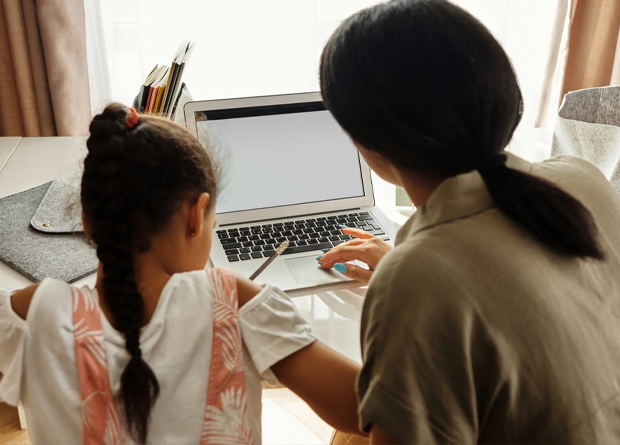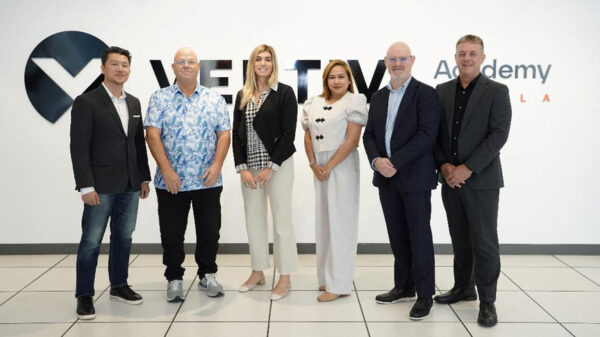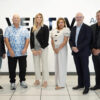By Chris Connell
Managing Director for Asia Pacific at Kaspersky
Many crises cause societies to explore new opportunities, and the pandemic followed by the switch to WFH model is no exception. It is likely to accelerate underlying trends in urban living and enhance the quality of life for city-dwellers. Even though the pandemic isn’t over and no one really knows for sure what will come next, we at Kaspersky are already observing some emerging trends, as we strive to make the world a safer place through innovative solutions to protect cities, businesses, and the public.
In this article, I share my opinion of how our living environment is set to change following the influence of teleworking; how the physical world will interact with the virtual; what technologies will empower these shifts; and what can be done to make this process safer.
Homes: fantastic info-workers and where to find them
Never before have so many people found themselves in such similar conditions at the same time, making the pandemic experience truly global. For the second year running, we are witnessing remote working taking place “en masse”, and how different sectors of the economy have actually been boosted by the change.
One of them is obviously e-commerce, with the process of visiting bricks-and-mortar stores more complicated. Pandemic measures worldwide have led to higher online parcel volumes, which has also been evidenced in a rise in delivery services. People are getting used to spending more time at home, so dark stores, food deliveries, and overall digitalization of the commerce experience will continue to grow, making contactless payments the new norm.
Urban life varies greatly depending on the patterns of work, leisure, and consumption of citizens. So with most of us living and working at home, COVID-19 has become a catalyst for the acceleration of intelligent buildings and smart home technologies that were already being implemented into the real estate industry.
Today, things like keyless entry, voice-activated elevators, digital room service, remote notarizations, and valet parking are getting even more valuable, as consumers embrace this trend for hands-off technology to be brought into every home. This seamless fusion of the digital and physical worlds can be secured through technologies that take a “cyber immune” approach.
In terms of the personal security of smart homes, certain secure elements are essential – like correctly configuring home Wi-Fi networks or protecting devices and control panels with a strong unique password. That way, an attacker will not be able to simply brute force the “key” to users’ homes. And as digital penetration grows, consumers are implementing new habits and precautions daily.
According to recent Kaspersky research, 48% of online users protect a Wi-Fi network with a password, 58% are currently using internet security software (excluding built-in software) and the majority (65%) agree that antivirus software is required for good “digital hygiene” – just like washing your hands before eating.
Offices: what the workplace of the future will look like
Millions of white-collar employees who have been enjoying the opportunity to work from anywhere have encountered the need to create a virtual office at home, where they can fully concentrate. And, as the world starts to consider the hybrid work model, most workers will be likely heading to the office just two or three days a week. This all affects commercial real estate with new open office layouts with meeting rooms, small private offices, hot desks, and co-working spaces.
Workers can gain a number of benefits from this hybrid work concept, like rent savings, lower overheads, a made-to-order work environment, and no more long daily commute. With this “pop-up” workspace paradigm, virtual work will be available to anyone who wants it.
However, the necessity to organize IT support adds a burden on employees as well. One simple piece of advice can be the recommendation to turn on a VPN – no matter whether you are working at home or on a public Wi-Fi network – to protect data, hide your IP address and ensure online actions aren’t intercepted.
Cities: how the living environment will change
The “death of the suburbs” narrative has been trotted out many times by demographers and sociologists, but due to COVID-19, we are now observing re-urbanization and a return to suburban life, as millions of people have started changing their apartments in dense downtown neighborhoods in favor of green distant locations, with less human contact. Meanwhile, “Zoom towns” are gaining traction in the media, with vacation destinations turning into real estate hot spots as workers escape densely packed cities to work from their ideal location.
You might find some great apartments to rent near the park during the time you stay in Sydney, to discover thousands of apartments and homes for rent in Sydney check out the website of Rentberry.
However, the other conclusion this pandemic has taught us is that we want to meet face to face, because it’s human nature to communicate and live together. People want to go to bars and restaurants, they need eye-contact at meetings and to feel connected to other teammates to be productive – and that’s why big cities will always be desirable.
The look of our future cities is not written in stone but some urban trends were triggered last year. For example, the concept of 15-minute cities became a reality, where citizens can access daily needs within a short walk or get fresh air in the context of teleworking. Huge malls have made way for local grocery stores, and instead of needing to drive or use public transport to reach them, they are only a bike ride away. Finally, people can spend more time in their neighborhoods and prioritize their lifestyle needs based on affordability, commercial infrastructure, leisure capacities, parks, or whatever they value most.
These are all long-lasting urban tendencies, and post-pandemic habits will likely shape the look of future neighborhoods to provide for people who enjoy city-living but in a family-friendly environment. This includes mixed-use real estate developments, which pair residential housing with offices, green roofs and balconies, large courtyards and playgrounds, restaurants, and retail.
When planning a living environment, developers need to provide people with infrastructure, create opportunities for communication and leisure, enhance a sense of community and invest in human development and health. The technologies that sanitize public spaces, make contactless entry possible, or transform tourism during stay-at-home orders with the help of VR and AR tours will likely bring us closer to a future of smart homes and smart cities. Through our company mission of bringing on the future, we believe that anyone can benefit from technology while being sure that cybersecurity solutions will safeguard this process.












































































































